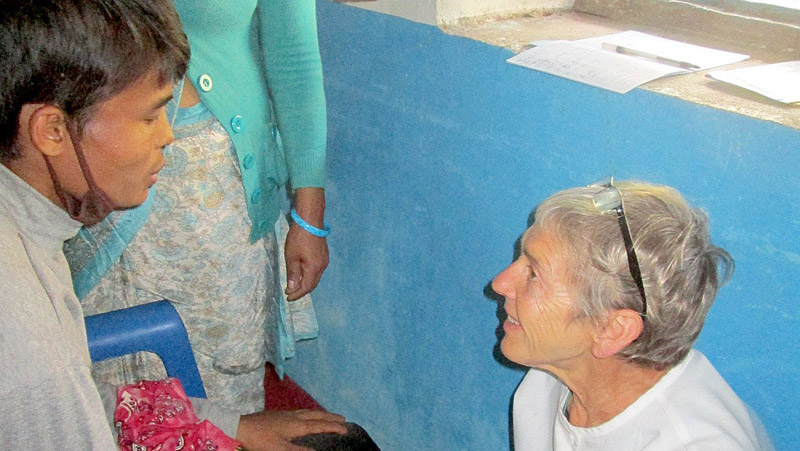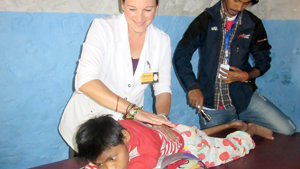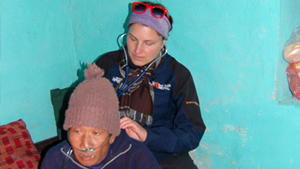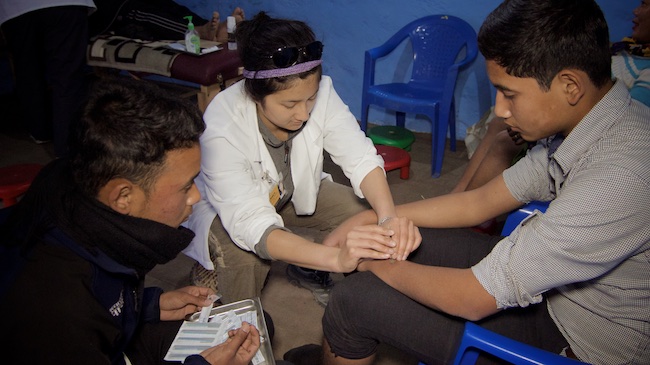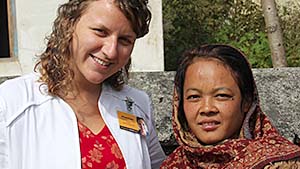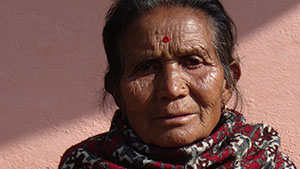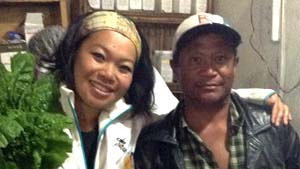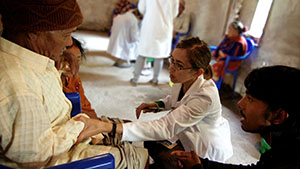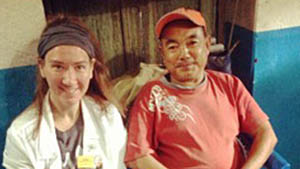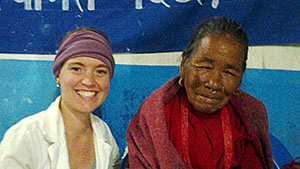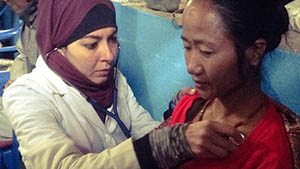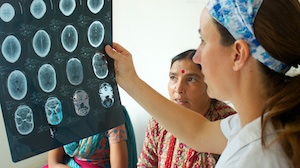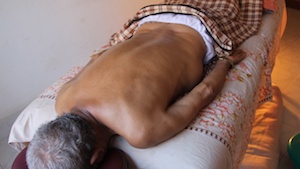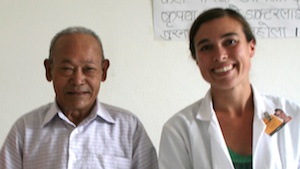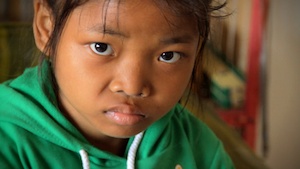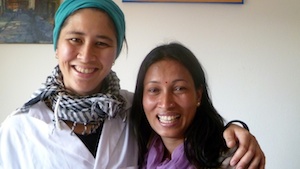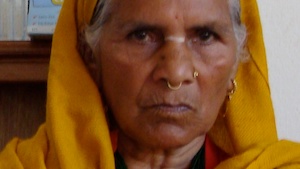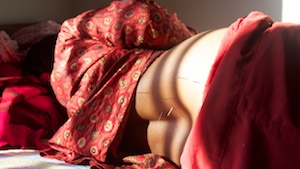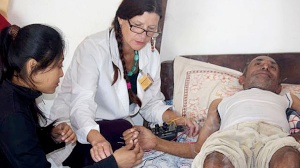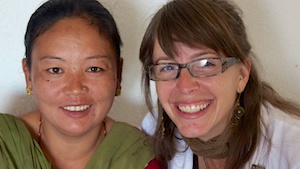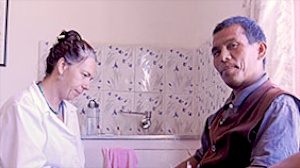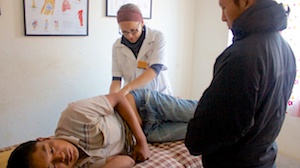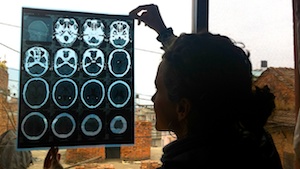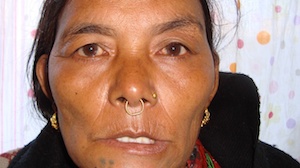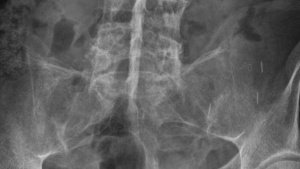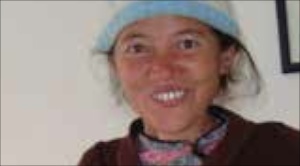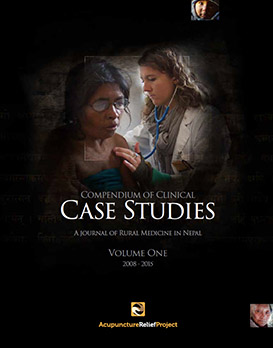Anna Helms BHSc (Acupuncture)
November 2013
OVERVIEW
63-year-old female presents with chronic purulent vaginal discharge, pruritus vulva and tingling in the extremities. Test results show hyperglycemia of RBS 540 mg/dl as well as vaginal candidiasis. Patient received 9 treatments of acupuncture, referral for insulin therapy, advice on diet and exercise, as well as Chinese herbs. With education, continued treatment and case management, she will be able to control her diabetes and prevent further candida overgrowth and complications.
SUBJECTIVE

63-year-old female presents with white, foul-smelling vaginal discharge, for the past 3 years. Patient reports vaginal itching, which has increased in severity over the last month. She describes the area as ‘burning’ with small red and purple raised sores and no pus. Secondary complaints include blurry vision, red eyes, weakness in her limbs, some achy pain and tingling in both her legs and feet.
Patient feels thirsty, craves sweet foods, and reports an increased appetite for the last 2 years. She eats irregular meals, which usually consist of rice, green leafy vegetables, potatoes and dal bhat. She drinks milk tea with sugar a few times a day and drinks approximately 1.5 L water per day. After eating, the patient feels bloated with occasional nausea. Her energy levels fluctuate and she describes a feeling of a dry scratchy throat, especially in the afternoon. The patient experiences burning and dribbling urination at a frequency of 8-9 times per day and 3 times per night. The urine is described as cloudy in appearance. Her stools are daily, loose and often have a foul smell. She tends towards rumination and says she often wakes at night with difficulty falling back asleep.
OBJECTIVE
The patient appears approximately 10 kg overweight with a large midriff. During treatments, she often dozes off for 2-5 minute intervals. In her treatments, lasting approximately 30 minutes, she yawns 4-5 times. Patient responds to questions with skeptical, distracted and short answers. Her extremities are cold to the touch and paresthesia is not detected with sharp/dull or soft touch tests. Her legs have a blue/purple tinge, with pronounced varicose veins in both shins with bruising medial to the tibial head (SP9) on her left leg. A random blood glucose test resulted in a reading of 258mg/dl (normal fasting blood glucose level: 80-120mg/dl). This was taken at approximately 3:30 pm, 3 hours after eating. BP 160/100.
Tongue: Pale/crimson body, dry, cracks in the Spleen/Stomach area with a yellow coat, which is thick at the root
Pulse: Slippery at the superficial level (especially full in the stomach position), but with underlying deficiency at the deep level
Recent patient-provided lab records show: Vaginal swab culture: Candida species isolated Fasting blood glucose: 218mg/dl Postprandial blood glucose: 438mg/dl
ASSESSMENT
DX: Pruritus vulva due to uncontrolled type II Diabetes Mellitus (DM) and vaginal candidiasis
Presenting signs and symptoms of DM, in this case, include increased thirst, appetite and polyuria. Sub-acute signs and symptoms of DM are lethargy, weakness, fatigue, visual blurring, pruritus vulva, and symptoms that come-and-go as plasma glucose levels fluctuate, with complications of tingling in the extremities (legs and feet).
TCM DX: Kidney yin deficiency with empty heat and damp from Spleen qi deficiency; Spleen qi deficiency signs and symptoms with damp include vaginal discharge, dribbling and cloudy urination, loose stools, bloating, nausea, over-thinking, bruising easily, sweet cravings, fatigue, vagueness, excessive weight especially around the midriff, slippery pulse and a pale tongue body with thick coating with crack in the Spleen/Stomach area. Kidney yin deficiency signs and symptoms with empty heat include dry scratchy throat in the afternoons, high thirst, burning urination, red/purple raised sores, red eyes, increased appetite, foul smelling stools, dry crimson tongue and a deficient pulse at the base level.
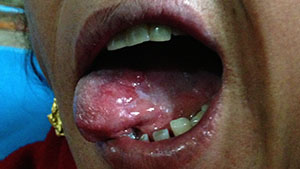
PROGNOSIS
If the treatment plan is followed, the prognosis is good with full resolution of the candida infection. If the blood glucose is managed properly, the patient should see a general improvement in her overall health. In this case, patient compliance is very important to the overall outcome. If her blood glucose continues unmanaged, it is likely that the patient’s condition will continue to decline, and a symptomatic approach to treatment will likely result in reinfection.
INITIAL PLAN
Referral: Immediate referral to an endocrinologist for evaluation of hyperglycemia
Pharmaceuticals: Acidophilus (probiotic) capsules given for direct vaginal insertion 1QD for 10 days; Clotrimazole-candida-powder and sertaconazole nitrate vaginal cream applied topically BID for 10 days
Acupuncture: Treatments 2 times per week with a reassessment after 10 treatments; Treatment principles: Drain damp and clear heat (8 days with herbs), then tonify the Spleen and long-term tonify Kidney yin; Typical treatment includes LR5, ST36, CV12, SP6/9, SJ3, LI11, GB43, LR3, Yishu (Pancreas Back-Shu) and KD6.
Chinese herbs: Long Dan Xie Gan Tang, 8 pills TID for 8 days to clear damp/heat; Zhi Bai Di Huang Wan to nourish the Kidney yin and clear deficiency heat, 8 pills TID for 3 weeks.
OUTCOME
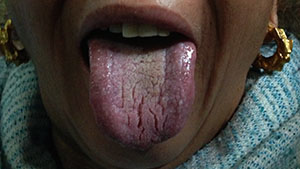
At reevaluation, the patient reported that the vaginal sores, discharge and itching had ceased. Urination had been reduced to 3 times per day and 1 time per night. Stool was more formed and she described her energy levels as more even. At this time, the patient had not been to see an endocrinologist due to financial reasons, and therefore had not received adequate allopathic medication.
REVISED PLAN AND CONTINUED TREATMENT
The patient was encouraged to seek the medical advice of an endocrinologist and was seen by a general practitioner at the Hetauda Hospital. At that time, a random blood glucose test was taken at 540mg/dl. Patient reported that the doctor gave her diet advice (to cut back on sugar and fat), and said she did not need medication. The patient was given an additional referral and instructions to see an endocrinologist in Kathmandu. Long-term management of the diabetes should include educating the patient in self-care, self-monitoring of blood glucose levels, and insulin administration.
Long-term goals for the patient’s health include keeping blood sugar levels within normal range, weight reduction (5-10kg), maintaining diet with limited/no refined carbohydrates and fats, eating small regular meals, keeping a daily ½ hour moderate exercise regimen, reducing stress, peripheral massage to help with circulation, reducing accompanying risk factors (high blood pressure) and identification and treatment of chronic complications.
The patient should participate in routine quarterly check-ups, an annual ECG, a biannual eye exam, and routine checkup for lipids (triglyceride, HDL-C, LDL-C and total cholesterol). The patient should watch for urinary tract infections, monitor the legs for neuropathy signs and diabetic ulcers. Consider low dose aspirin (eg: 75–325mg per day) for cardiovascular protection, chromium supplement for sweet cravings as needed, vitamin E for heart health and blood pressure medication.
CONCLUSION
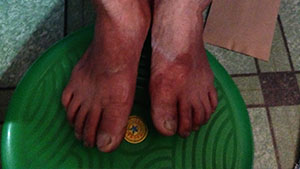
When this patient began treatments, she was unaware she had diabetes. Education, encouragement and psychological support were a large part of managing this case. Involving her in the treatment plan was important and cannot be overstated. Our patient/doctor partnership was highlighted with an agreed upon understanding of the management plan, risks and complications.
In treating DM, acupuncture should be considered adjunctive to allopathic care. Studies suggest acupuncture and TCM are supportive of insulin treatment and may help prevent complications. Our identification of her condition with a proper diagnosis, education and integrative treatment lead to the elimination of her acute pre
At this point, our role is to support the patient in accessing insulin treatment, providing case monitoring and palliative care.senting complaints. However, proper management of her blood glucose has not been achieved. If this allopathic care cannot be acquired due to the patient’s ability to access proper care, the likely result will be a reinfection of candida and a progressive decline of her overall health.












